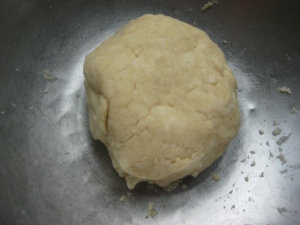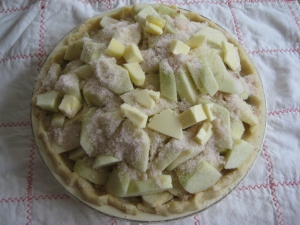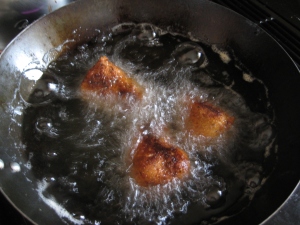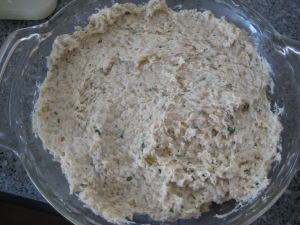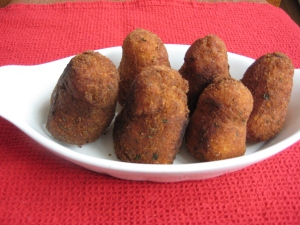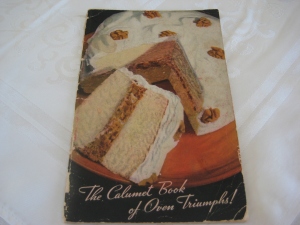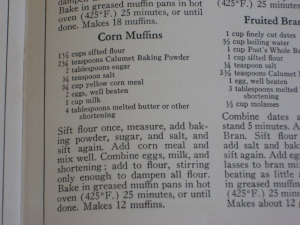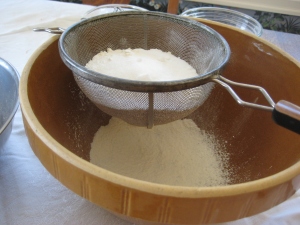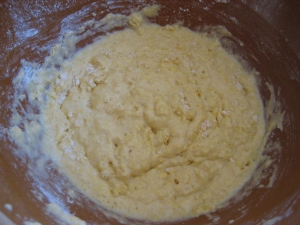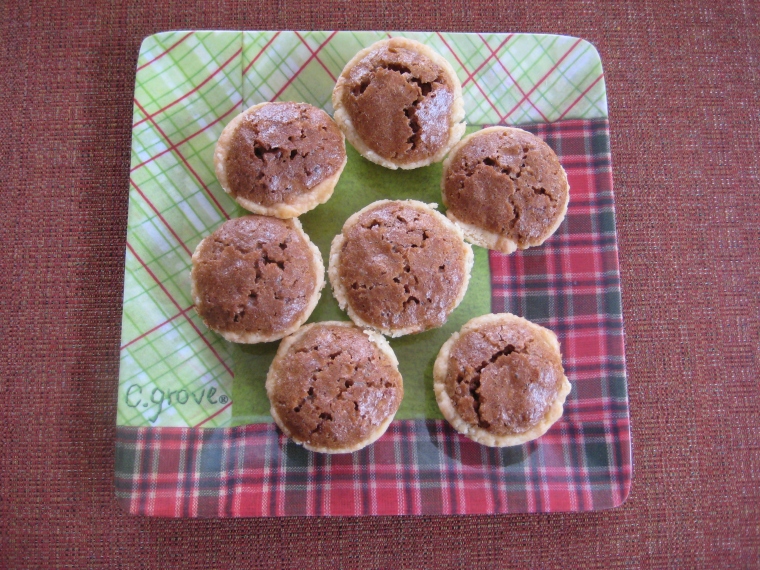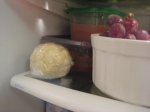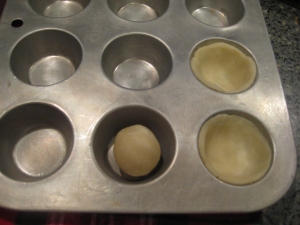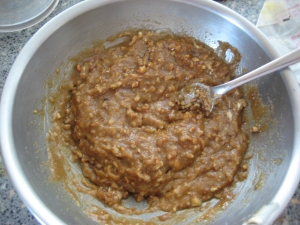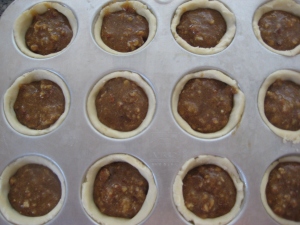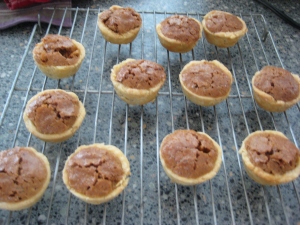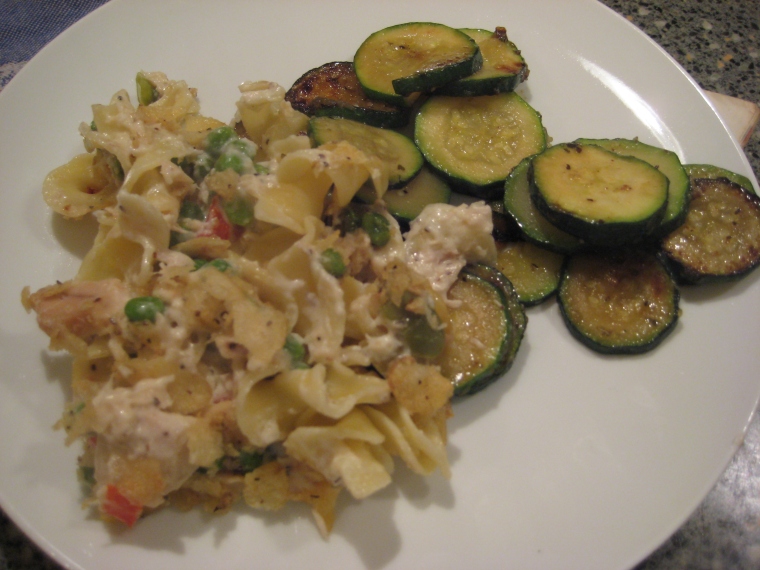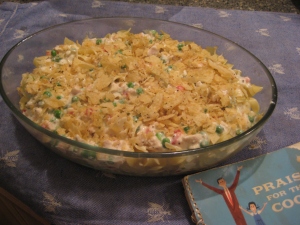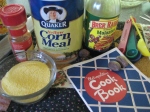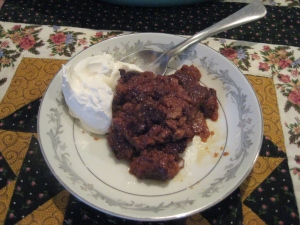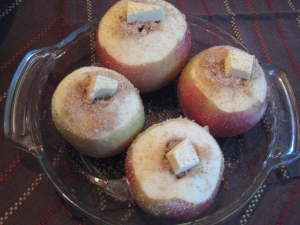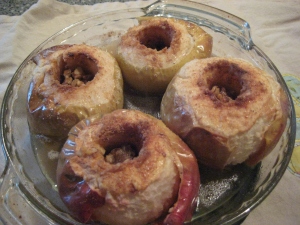 Snow pouring from the sky yet again was bringing on an alpine vibe. I was feeling like a true housefrau, stuck inside the chalet with my Hummel figurines and Wagner CDs. For lunch, it seemed only appropriate I whip up a little Deutschland-esque fare. After a quick inspection of my Old Food files, I decided upon a recipe that matched my Stuttgart state of mind–German Poppy Seed Hamwiches.
Snow pouring from the sky yet again was bringing on an alpine vibe. I was feeling like a true housefrau, stuck inside the chalet with my Hummel figurines and Wagner CDs. For lunch, it seemed only appropriate I whip up a little Deutschland-esque fare. After a quick inspection of my Old Food files, I decided upon a recipe that matched my Stuttgart state of mind–German Poppy Seed Hamwiches.
I can’t say for certain Germans eat sandwiches exactly this way, but the ingredients—horseradish, mustard, ham, cheese and rye bread–certainly qualify as German inspired. This recipe comes from the old Home Economics department at Parkland High School, just outside Allentown, Pennsylvania. A friend of mine there, assistant principal Donna Steckel, copied the department’s entire recipe archive just for me. She reports that the PHS collection dates back to the 60s and 70s and may have been used by home ec. teacher Sarah Harding. I can understand why this recipe made the cut for her classes. It’s simple, requires only beginner-level kitchen skills, includes interesting ingredients and yields hot sandwiches with a twist. These weren’t the slightly damp, white-bread grilled cheese students found in their school cafeteria. These had a bit of zip and incorporated condiments more associated with adult palates. There’s no way I would have voluntarily consumed horseradish or spicy mustard as a teenager, so I appreciate how this recipe took her students outside their culinary comfort zones. Come to think of it, I enjoyed this grilled cheese 2.0. A nice change from the routine.
German Poppy Seed Hamwiches
Mix:
1/4 cup soft butter
2 tablespoons horseradish mustard
2 tablespoons finely chopped onion (I used a red onion)
2 teaspoons poppy seed
(You’ll have lots left over if you’re only making a single sandwich with two slices of bread.)
Spread on two slices of rye bread (I used a marbled pumpernickel-rye). Top with:
1 thin slice ham
1 slice Swiss cheese
Top with another slice of rye bread. Butter tops and bottoms of sandwiches. Grill on both sides at 300 degrees on pre-heated electric griddle or fry pan until hot and cheese is melted.
Pass extra poppy seed butter. Wunderbar.

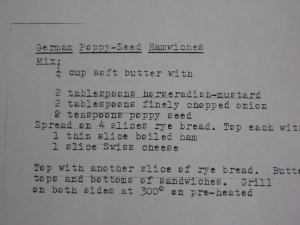

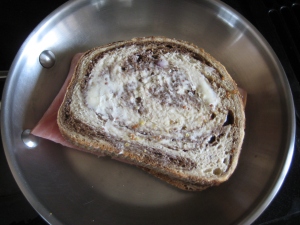



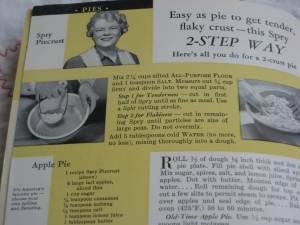
 Step 2: For Flakiness: Cut in remaining Spry until particles are size of large peas (I went back to my best pastry-making tool—my hands). Do not overmix.
Step 2: For Flakiness: Cut in remaining Spry until particles are size of large peas (I went back to my best pastry-making tool—my hands). Do not overmix.